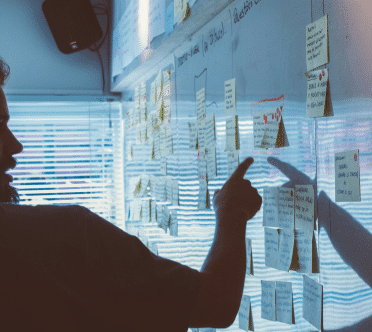Case study:
Russian-English AI translation engine training
k+
words
week
timeline
people
team
The task
We took part in a milestone AI training project, where the goal was to make an AI capable of translating conversational language from Russian into English by means of analyzing and learning from human pre-translated tweets and articles. Machine translation was inadequate for this task—since the final content was used to train the AI, it had to be human-translated and reviewed. The client requested us to process 350,000 words in a short turnaround time—just 2 weeks.
Approach
Given the scope and specifics of the job, we planned the workflow and assembled a team of 10 best-matching translators and 10 editors, then established a communication channel that would allow the team to quickly exchange information while working.
The team would translate and review the content in 10 batches, with each batch having a 4-stage delivery plan—translation, review, QA check, and final updates and review. They would follow a tight schedule that was planned out to the hour.
During the project, several issues were identified and solved. Firstly, the client had chosen WordBee as the CAT software for this project, but its server struggled to handle the massive files and high number of concurrent users. However, our team pushed through the process.
The next issues arose from the content itself—the tweets were very diverse, ranging from short opinions to emojis, including swearing and nonsensical material. Hence, the language register was extremely broad. Our team decided to unify the register and style as much as possible by establishing and adhering to a register guide with a 2-tier process, where translators and editors followed the same register guidelines while working, resulting in more coherent content.
Keeping consistency was also a challenge. Our manager realized that fact early on and decided to create a separate live channel for glossary tracking, editor discussion, and idea exchanges, allowing the review team to identify issues and make decisions more efficiently, thereby greatly improving translation consistency.
Result
The careful planning, scheduling, research and effort proved effective—the team managed to deliver the whole project a day early. The client was satisfied, and we were grateful to be part of such a significant project for the future of translation.
Other case studies:
The project goal was to introduce a localization infrastructure for the client’s product platform to effectively scale it from 2 to 16 languages. Each new language added 220,000 words of translated content, with a desired turnaround time of 4 weeks.
The client approached us to become the official translation partner in a large-scale EU procurement for localizing vocational learning modules for ERASMUS+ students into 28 languages.
This job had around 94,000 words of content per language and needed to be delivered in 4 weeks. The challenge was a lot of corrupt and improperly displayed content. This required some creative engineering on our side.



